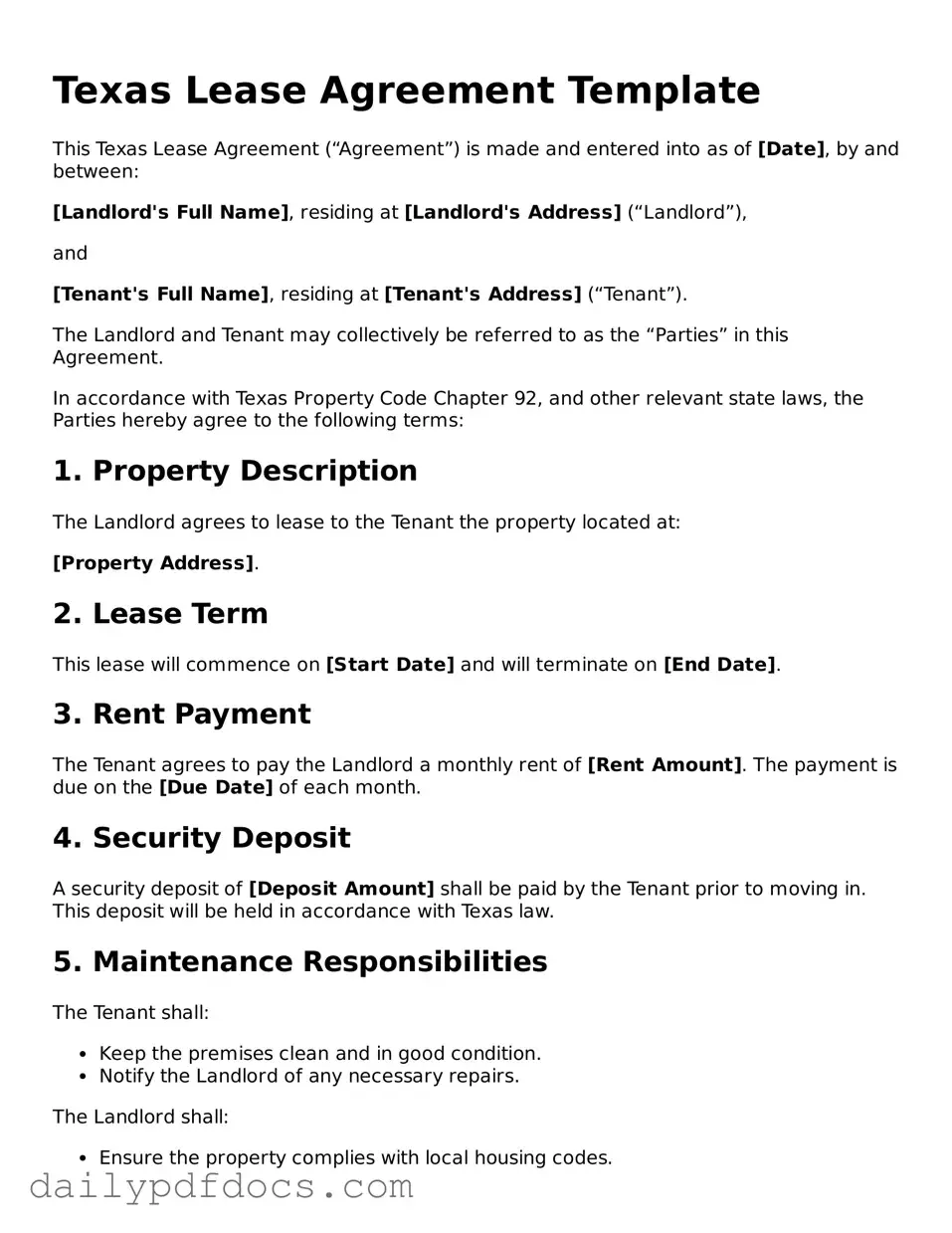Texas Lease Agreement Template
This Texas Lease Agreement (“Agreement”) is made and entered into as of [Date], by and between:
[Landlord's Full Name], residing at [Landlord's Address] (“Landlord”),
and
[Tenant's Full Name], residing at [Tenant's Address] (“Tenant”).
The Landlord and Tenant may collectively be referred to as the “Parties” in this Agreement.
In accordance with Texas Property Code Chapter 92, and other relevant state laws, the Parties hereby agree to the following terms:
1. Property Description
The Landlord agrees to lease to the Tenant the property located at:
[Property Address].
2. Lease Term
This lease will commence on [Start Date] and will terminate on [End Date].
3. Rent Payment
The Tenant agrees to pay the Landlord a monthly rent of [Rent Amount]. The payment is due on the [Due Date] of each month.
4. Security Deposit
A security deposit of [Deposit Amount] shall be paid by the Tenant prior to moving in. This deposit will be held in accordance with Texas law.
5. Maintenance Responsibilities
The Tenant shall:
- Keep the premises clean and in good condition.
- Notify the Landlord of any necessary repairs.
The Landlord shall:
- Ensure the property complies with local housing codes.
- Address repair requests in a timely manner.
6. Utilities
The Tenant is responsible for the payment of the following utilities:
The Landlord will pay for:
- Trash removal
- Lawn maintenance (if applicable)
7. Termination
Either party may terminate this Agreement by providing a written notice of [Number of Days] days prior to termination.
8. Signatures
The Parties hereby agree to the terms outlined in this Agreement:
Landlord Signature: __________________________ Date: _______________
Tenant Signature: _____________________________ Date: _______________
This Agreement represents the entire understanding of the Parties and supersedes all prior agreements, verbal or written.
